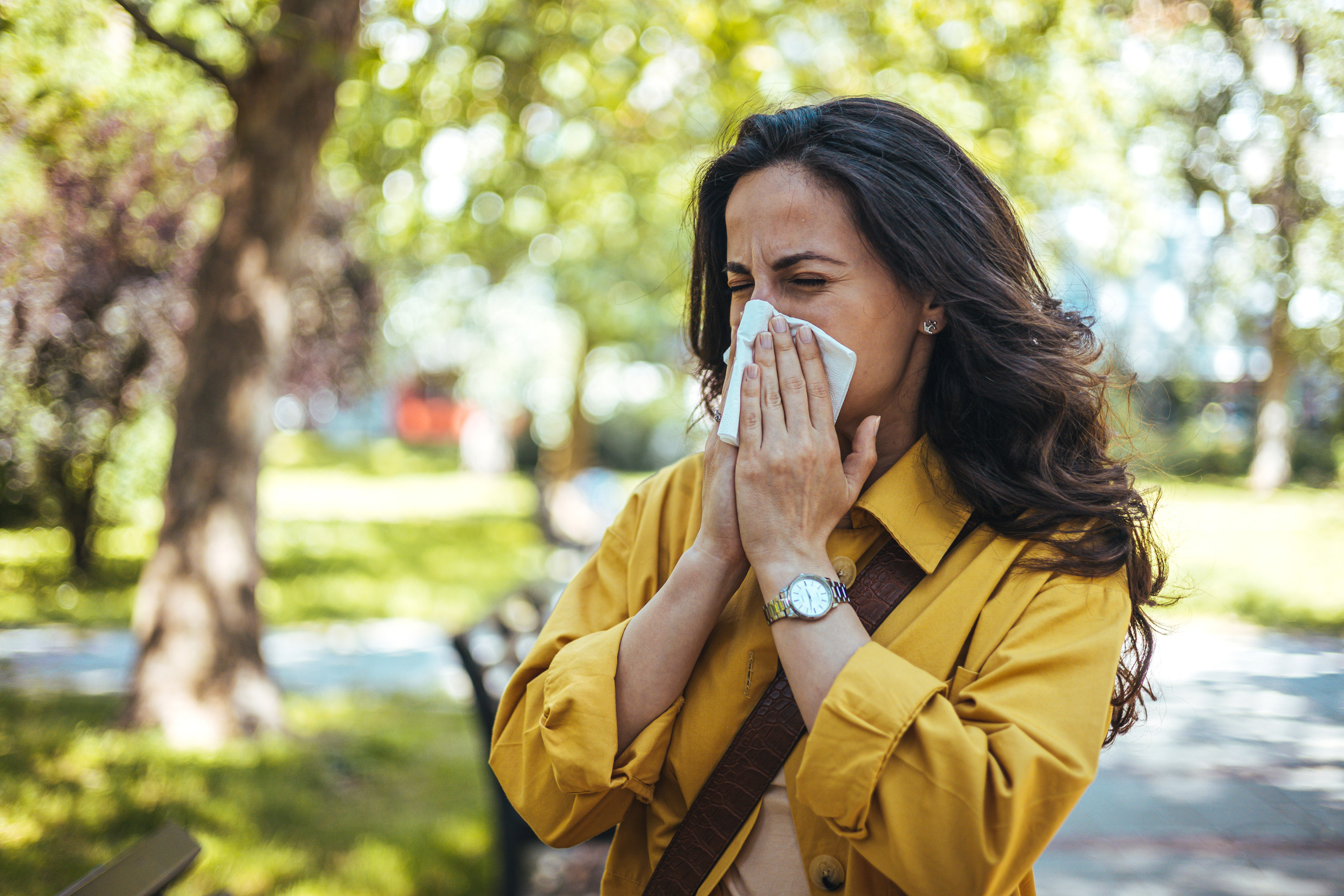Commitment + Clinical Leadership = Better Outcomes

Spring Allergies: Types, Symptoms, and Helpful Tips
The spring season brings April showers, beautiful blooming flowers, and warmer temperatures.
However, it also will bring spring allergies. Did you know over 81 million Americans will experience spring allergies this year?1
With spring allergies being so prevalent, it is important to be aware of the type of spring allergens, the symptoms to look out for, and how to best manage them. Check out our guide on spring allergies to learn how to get tips to manage yours this season.
Types of Spring Allergens
There are two main types of spring allergens: tree and grass pollen and mold. The release of these allergens into the air depends on climate and weather conditions.2
- Tree and Grass Pollen: The pollen found on trees and grasses is easily transmissible to other organisms, including humans. On average, tree and grass pollen is released from February through April, however, it can be released as early as December from cedar trees in the South.3
- Some examples of trees that release allergens are birch, elm, hickory, maple, and mulberry.4
- Mold: A rainy spring day can be the perfect environment for mold to grow. Typically, mold can grow on plants and water outside.5 Mold usually begins to grow during early spring.6
- Some examples of where mold is grown are plants, grasses, bathrooms, kitchens, and basements.7
Symptoms of Spring Allergies
Some common spring allergy symptoms are:
Tips to Manage Spring Allergies
Spring allergies can make you feel under the weather, but there are some actions you can take to help manage them. Here are a few of our best tips to help you manage your spring allergies.
- Gather the necessary allergy relief products
- Kleenex, VapoRub, nasal spray, antihistamines (Claritin, Zyrtec), and decongestants (Sudafed) can provide relief to your spring allergy symptoms10
- Be aware of when the spring allergy season starts
- The spring allergy season can start towards the end of winter in February with tree pollen. However, the start of the spring allergy season depends on weather conditions11
- Ensure Clean Air
- By ensuring your home has clean air, you will lower the amount of spring allergens in the air. It is recommended to have an allergen-specific air HVAC filter and an air purifier12
- Stay indoors
- When the pollen count is high, pollen can easily get on your hair, skin, and clothing which can exacerbate your spring allergy symptoms.13 Staying indoors and wearing clean clothes every day can help keep pollen from accumulating on your body.
- Shower Immediately
- If you do have to go outdoors, shower immediately after you come home. This can help get rid of the pollen and other allergens that can get into your hair and skin.14
When To See a Doctor
If over the counter remedies don’t work and you find that you have a strong reaction to certain allergens, see a doctor. They may be able to prescribe you with medicine or identify the root cause of your allergies.
Saber Healthcare
Saber Healthcare is an organization that provides consulting services to more than 130 buildings across the states of Ohio, Pennsylvania, Virginia, North Carolina, Indiana, and Delaware. To learn more about our company and services, click here.
Saber Healthcare is an organization dedicated to providing consultant services to long-term care providers. This article is for informational purposes and is not meant to be seen as professional advice. Please consult with a medical expert before relying on the information provided.
Sources
- https://www.washingtonpost.com/wellness/2024/03/18/spring-pollen-allergy-sufferers/
- https://acaai.org/allergies/allergic-conditions/seasonal-allergies/
- https://www.zyrtec.com/allergy-guide/outdoors/understanding-spring-allergies
- https://aafa.org/allergies/types-of-allergies/pollen-allergy/
- https://www.thermofisher.com/allergy/wo/en/allergy-types-symptoms/seasonal-allergies/spring-allergies.html
- https://www.puroclean.com/blog/mold-season-what-time-of-year-does-mold-grow/#:~:text=Mold%20season%20generally%20spans%20from,mold%20growth%20in%20your%20home.
- https://www.stoprestoration.com/spokane/about-us/blog/2023/april/spring-mold-allergy-season/#:~:text=Causes%20of%20Spring%20Mold%20Allergy,doors%20or%20through%20ventilation%20systems.
- https://www.yalemedicine.org/conditions/seasonal-allergies#:~:text=Itchy%2C%20watery%20eyes%2C%20a%20tickly%20throat%2C%20and,make%20you%20dread%20springing%20ahead%E2%80%94and%20falling%20back.&text=In%20response%2C%20your%20immune%20system%20releases%20chemicals,nose%2C%20itchy%2C%20watery%20eyes%2C%20sneezing%20and%20coughing.
- https://www.healthpartners.com/blog/seasonal-allergy-symptoms-and-causes/
- https://www.goodrx.com/conditions/allergies/youre-probably-taking-the-wrong-allergy-medication
- https://www.bvhealthsystem.org/expert-health-articles/seasonal-allergies-a-month-by-month-guide
- https://health.clevelandclinic.org/how-to-manage-spring-allergies
- https://www.mayoclinic.org/diseases-conditions/hay-fever/in-depth/seasonal-allergies/art-20048343#:~:text=Take%20extra%20steps%20when%20pollen%20counts%20are,early%20morning%20when%20pollen%20counts%20are%20highest.
- https://health.ucdavis.edu/blog/cultivating-health/tips-to-reduce-seasonal-allergy-symptoms-and-treatment-options-to-help/2023/03
